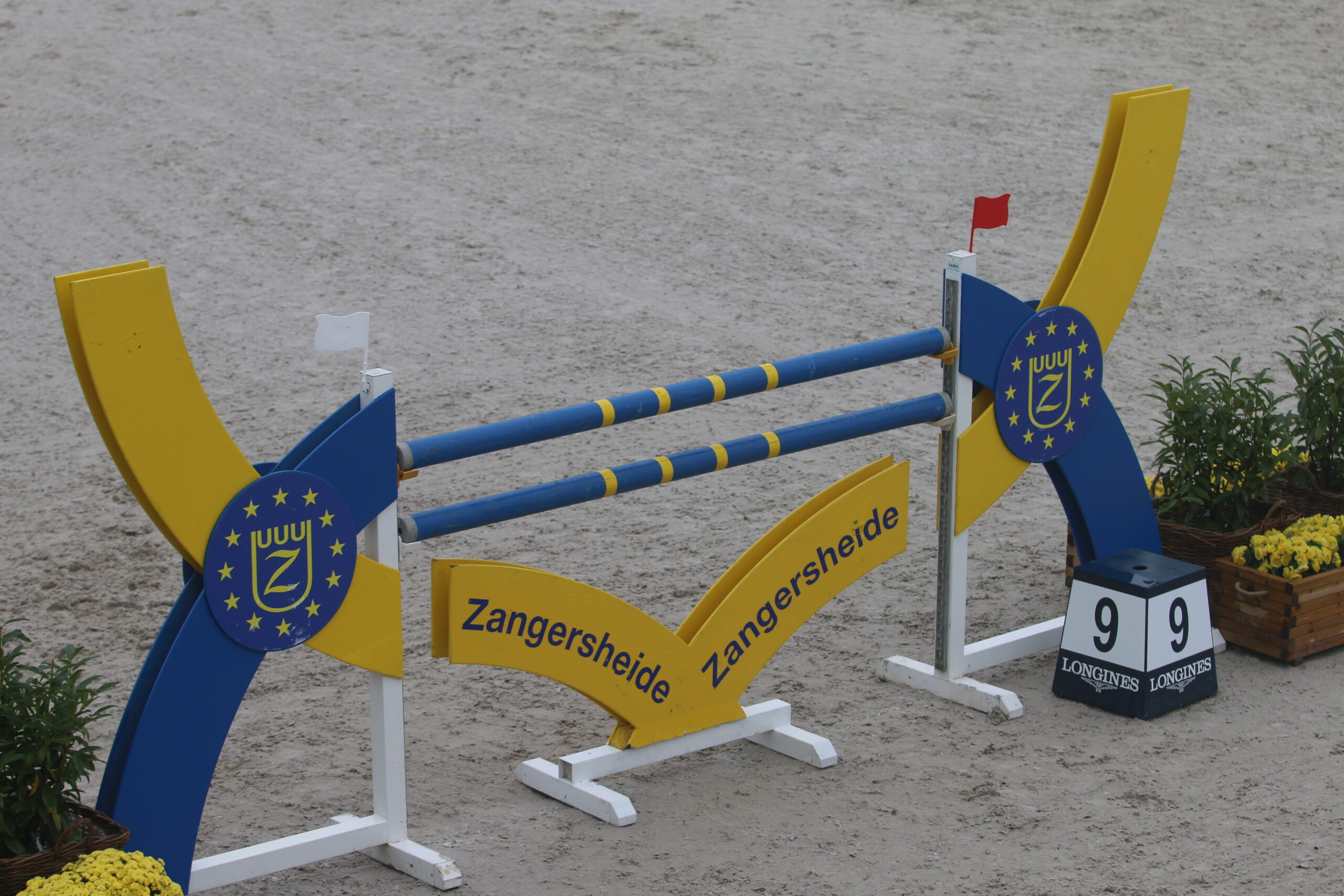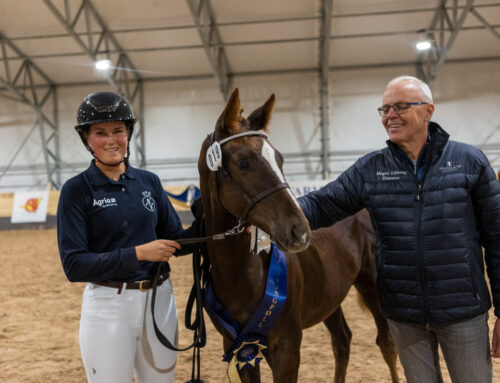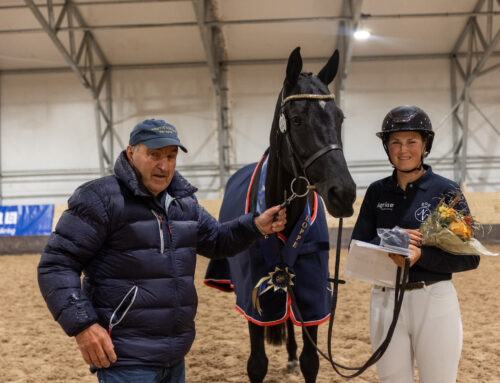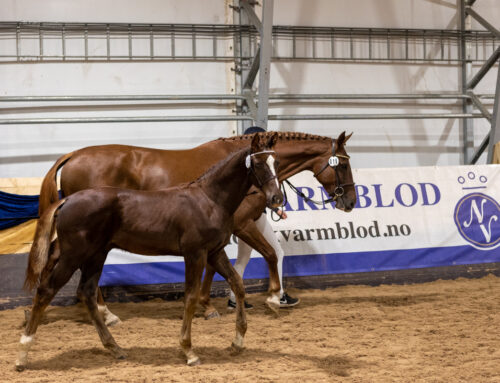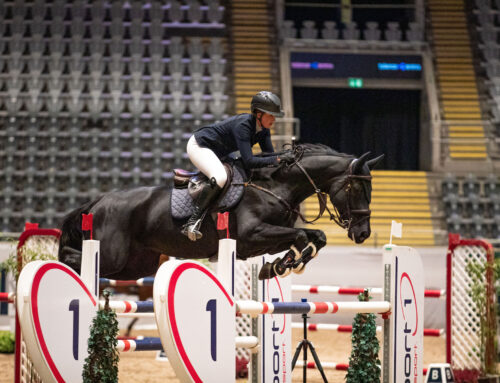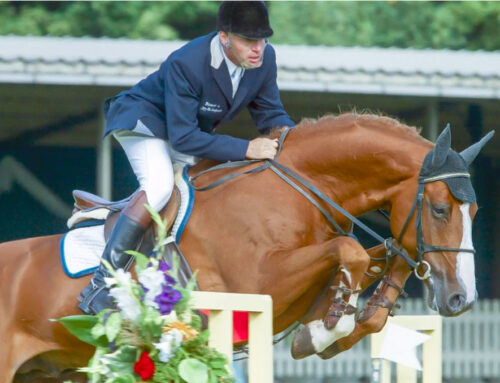Hvor ville ridehestavlen vært i dag uten Zangersheide?
Zangersheide har ikke alltid vært hva det er nå. Det forteller Piet Raijmakers sr. – en levende legende innen sprangsporten. – Da jeg kom til Zangersheide var det ingenting, forteller han og sier at de hadde ca femten kårede hingster på stutteriet, som knapt ble brukt. Fem år senere bedekket de 1300 hopper.
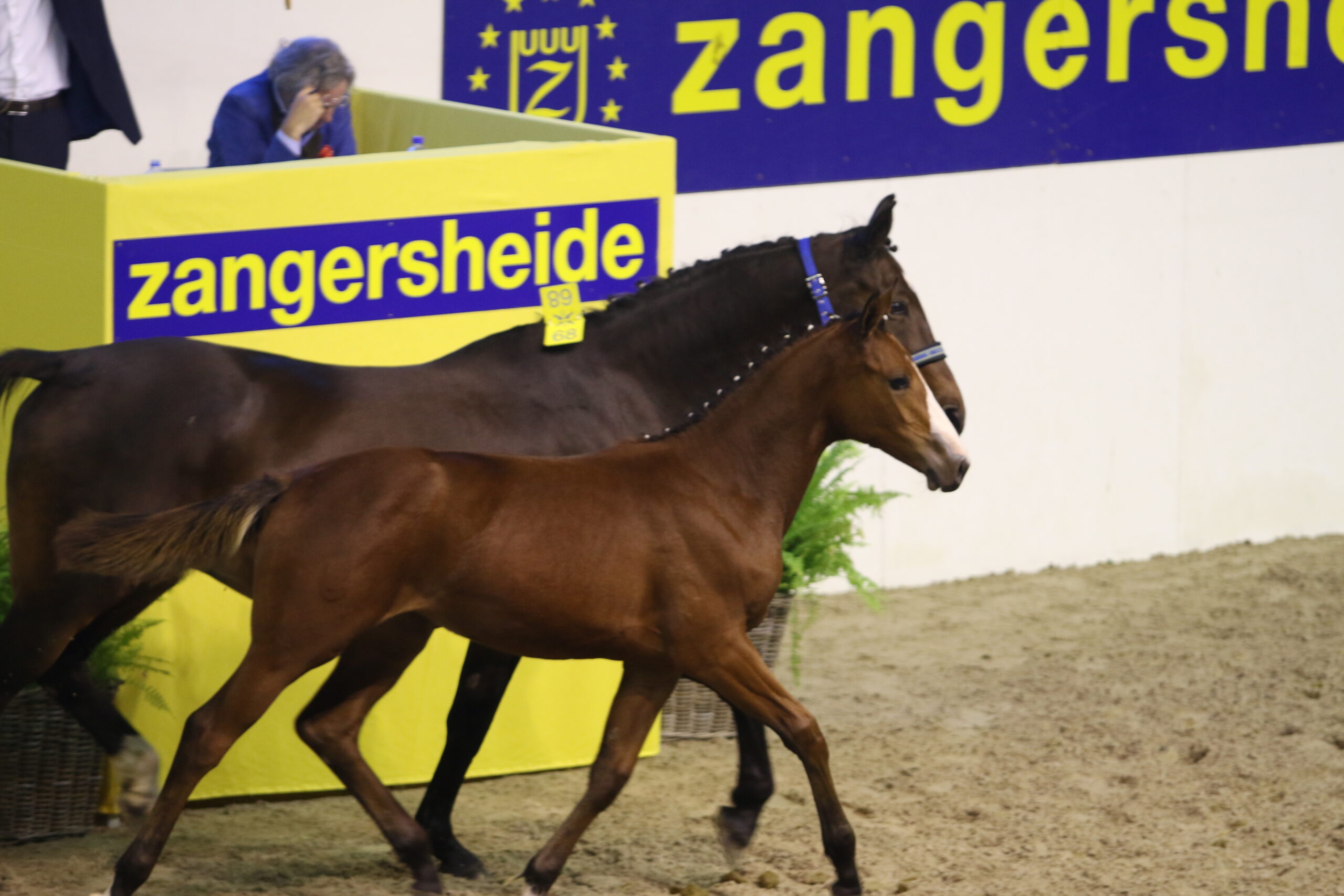
Techniques such as artificial insemination, X-rays, embryo transplantation and endoscopic assisted AI are now, through the efforts of Zangersheide, cultivated into daily routine. “Our all-over concept is based on research and pioneering, on marketing for the sport and a breeding program. We have nursed the show-jumpers breeding world into a new era!”, the sound from Lanaken is one of delight. “Also doctor Stihl built a similar archive, together we have of some 10,000 blood analyses available to us. Especially with the current possibilities in order to multiply the old blood cells we have a very valuable file”, says Tom Lemmens, who is responsible for the breeding program at Zangersheide.
Ability related to genetic factors
“Leon Melchior is possibly the first one who realised that ability was related to genetic factors. Before Zangersheide the big studbooks predominantly judged on conformation”, according to Leo De Backer, who arrived at Zangersheide in 1984. “Basically by coincidence, as I had a portable X-ray machine. At Leon Melchior’s request we started to do research on the youngsters. First at an age of six months and three years. And eventually also in between. Our research told us that the young horses that did not have a chip at the age of eighteen months, never did get them at a later age, either. If we did find a chip at that age, it turned out for that chip not to disappear at a later age. Our research was initially mainly focused on avoiding of OCD and the genetics of it, but also on navicular. Leon Melchior deserves every bit of credit for the fact that all the information of this research has become part of the stallion inspection. For many years we followed the development of sixty foals on a yearly base.” A pioneering masterpiece which made the X-raying of young stallions and horses nowadays common standard.
Double outcross
Tom Lemmens adds: “Actually, the story started a bit before that. I think Leon Melchior bought something like three- to four hundred mares in Hannover in the sixties. They had to be mares who had been active in the sport or had to have a mother or sister who performed well in the sport. They were all X-rayed and a lot of them were sent back because of defects. The ones that were left, became the foundation of the Zangersheide breeding program. There is still progeny of these lines around. For example, Cold As Ice, who goes back to the Hannovarian mare Aglaya, bought as the full sister of Agent (the Olympic horse of Paul Schockemöhle). After that we started with outcross and double outcross with stallions such as Almé and Ramiro. The idea of outcross comes from other sectors, for example the breeding of pigs. At that time outcross was ‘not done’, but later on it turned out that inbreeding followed by (double) outcross definitely was another step in the right direction for the breeding world.”
The necessity of own studbook
In the meantime Zangersheide actively moved forward in the sport. Piet Raijmakers: “We soon had horse walkers and other bits and pieces that were new or innovative. I had a brilliant time. And it all happened by coincidence. Leon had asked me a couple of times whether I would like to work for him, but his interest grew particularly after a Benelux-championship at Zangersheide, which I’d won. At the price giving he asked after the breeding of my horse, which I was able to give to him without a flinch. He quite liked that, especially when I told him I would be able to give him the breeding of all horses in the line-up for the price giving. First I thought, this is going nowhere, me together with such a headstrong personality. In the end it was Leo De Backer who was able to twist my arm, he was after a rider who shared his philosophy. So I left with my whole family and my groom for Lanaken, together with Arnold Boerekamps. I have to say, at times the arguments were quite hot. But Leon Melchior never had a problem with a different opinion, he actually quite liked that. I remember we once went to the UTV-days (national inspection in Utrecht, ed.) and he literally got stuff thrown at him. That sort of things did not effect him, rather the opposite, it made him stronger. Opposition made him even more determined to prove he was right.”
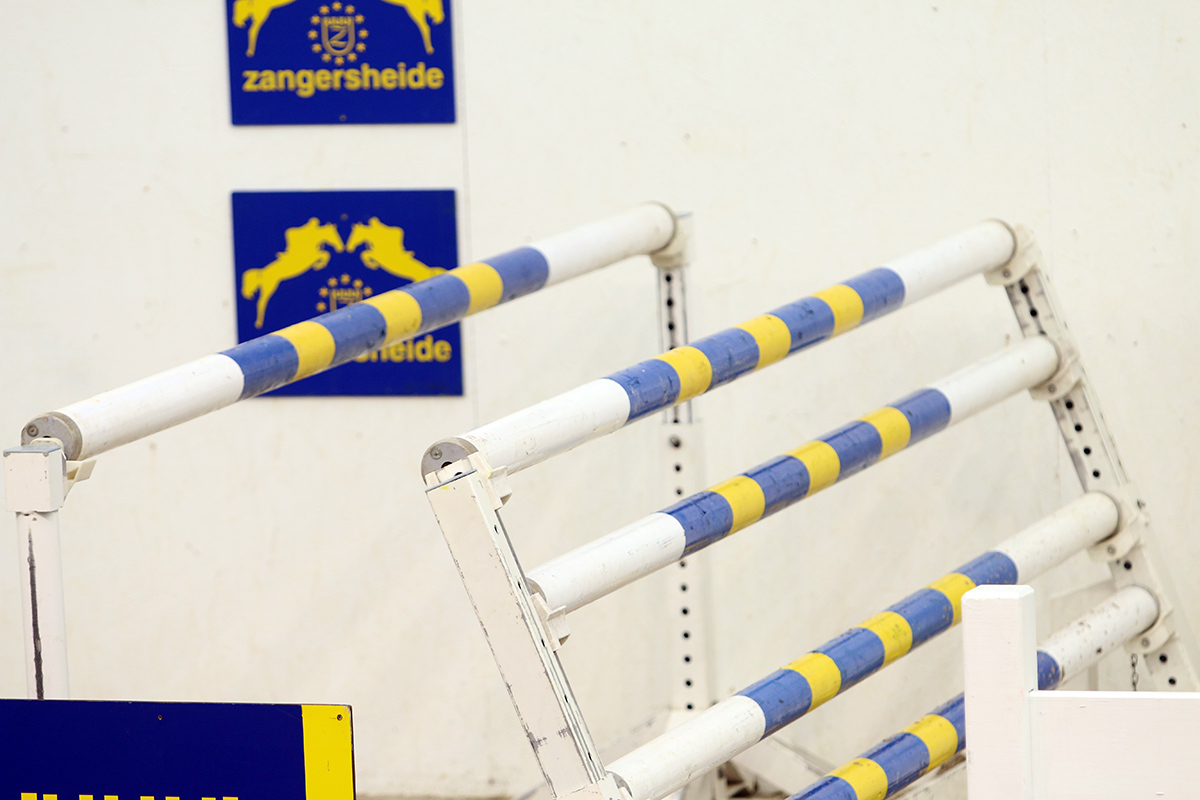
«Piet, we’re going for it»
Piet Raijmakers sat in the front row when Melchior started his own studbook. “Initially he wanted to create a subdivision within another studbook. For a while we were part of the Luxemburg studbook, but we got to big and later there were exploratory talks with other studbooks. But it appears the water was too deep. I still see us there after the umpteenth meeting. Finally Leon said: `Piet, we’re going for it’.” Because of their own breeding program, the start of a Zangersheide studbook really had become more or less a necessity. “The offspring of the mares bought in Hannover were not able to be registered anymore in Hannover because of the outcross. An alternative was therefore necessary, so that’s how our own studbook started”, Tom Lemmens says. Add to that the novelty of separating the studbook in the two sections, show-jumping and dressage, which subsequently became standard for many other studbooks.
No more leadrope
“Leon had, for then, many fresh ideas for the studbook”, Piet Raijmakers senior continues. “The stud fee had to go down, the stallion inspection had to change and he wanted to focus on performance breeding.” Lemmens adds: “We were and still are one of the few who, at the inspections, take the leadrope of the mares and foals and show them free. In the show-jumping sport at the end of the day it’s the canter that matters, not the trot you see with the horse on a rope.”
If you haven’t tried it, you’ll never know
“Leon is not interested in a pretty picture”, Piet senior agrees. “And those changes are precisely how he kept the other studbooks alert. I tell you, Leon never stops. Right now he is thinking about things that would never even occur to us. Of course there were failures. The line breeding, the close lines where brother and sister or son and mother were bred together. That turned out not to be a success, although there are some exceptions such as Regina Z, who is the daughter of Rex Z, who came out of a brother-sister combination. Or Rock Z, a stallion from a mother-son combination. But in those situations the rule is: if you haven’t tried it, you’ll never know.”
Rex Z did not produce that many offspring, however, a high percentage did perform in the sport. “Regina is by Rex, a product of inbreeding, out of a trotting mare. I mean, it can also be a one-off”, according to Tom Lemmens. “In the end the era of close inbreeding died a natural death, there was some opposition and the breeders were not terribly supportive either. We still do a bit of line breeding, for example, recently a clone of Ratina Z was inseminated with semen of Comilfo Plus Z, a grandson of Ratina Z.”
DNA-databank
It was at Zangersheide where a DNA-databank was first started, another first. “We began that in the middle of the eighties. Every horse has its own unique DNA, which can be used as a means of identification. A technique which is nowadays used in a more general way. Zangersheide is so far ahead with this, that I’m afraid the others will never be able to catch up, ever”, states Leo De Backer. “The importance of the DNA-research and the created databank, will only increase in the future, as it allows us to find out how the genes pass on and to recognise certain patterns. Our databank holds DNA of every stallion and all the offspring of that stallion. It was a hard learning curve, but it is because of this research that we were able to discover which horses genetically carried certain abnormalities, without actually showing any signs themselves.”
Cooperation with universities
Nowadays there is very little research done at Zangersheide anymore, however, the stud works closely together with universities, the laboratory of Van Haeringen in Wageningen (the Netherlands) and Cryozootech. At the moment Zangersheide is trying to unravel the DNA-pattern of horses. Looked at are the markers responsible for certain hereditary qualities. Every quality has its own specific marker and when those markers are found, the opportunity is there for a potentially huge advantage in the breeding. It will make it a lot easier to choose the right stallion for each mare. In short, once Leon Melchior also succeeds at this front, the percentage of luck involved with breeding will yet again become much lower and with its extended DNA-databank Zangersheide will make yet another leap onwards.
Semen in an inner tube
The eighties were a time of pioneering at Zangersheide in many other ways. “At some point we brought French blood into our breeding program, amongst which trotters, but also thoroughbreds. This did involve some risks, but today everybody agrees on the importance of outcross”, according to Leo De Backer.
“We made a giant leap when we designed our own semen thinner. Artificial insemination was done elsewhere, but at Zangersheide we were possibly the first ones to do it on a commercial basis.” Lemmens on this subject: “Zangersheide was the first to do AI for horses. Almé came here and he had to cover a lot of mares. The first semen was caught in the inner tube of a motorbike!”
Crucial for the history written
In the past breeders used to visit with their mare or the stallion owner would go to the breeder with the stallion. De Backer: “Leon Melchior bought a piece of equipment for semen research at a time when most universities couldn’t even afford this thing. It was a Hamilton Thorne `Ivos’, the summit of this type of equipment for semen research. Because of this research we were able to dose better and that made for better fertilisation results. At the end of the nineties we started with endoscopic assisted AI. The refinement of this technique made it possible for virtually needing just one drop of semen in order to fertilise an egg cell, because you more or less place the sperm cell on top of the egg cell. The technique demands a certain expertise and is therefore not widely used, but it did give Zangersheide an advantage in the sport as the Z-stallions did not have to cover as much.”
For Tom Lemmens the step towards edoscopic assisted fertilisation was crucial for the history written at Lanaken. “The technique is firstly designed because the semen of some stallions had become astronomically expensive and secondly because it was eventually less available. Consider a stallion like Carthago. In the meantime we use endoscopic assisted fertilisation systematically. The advantages are endless, the mare needs less manipulation, which diminishes the chances of getting dirty, the results are superb and it is therefore surprising the technique is not more widespread.”
IVF en ET
The endoscopic assisted fertilisation was only a small step away from in-vitro fertilisation and embryo transplantation. By now the semen research had made it possible to determine the sex of the foals. “We were quite ahead with this and the results were pretty good. But there was a cost attached to the research and the breeders were not too keen, so it was never commercialised, but it certainly is possible”, states De Backer. Although Leon Melchior was a huge advocate of embryo transplantation , the endoscopic assisted fertilisation has more advantages, such as cloning. “With cloning you know for certain that you end up with the semen of a horse genetically identical to the champion horse. The opposition against cloning was huge, but the achievement of Zangersheide is that it also inspected the stallion clones and managed to have some clones involved in the sport. In the meantime we at Zangersheide have cells in our freezer from all recognised stallions and all sporthorses of our stud.”
The cloning of horses is a very different story
Lemmens is well-known as an advocate for cloning, but he also see some disadvantages. “It will take some years before the results of the use of clones will show in the breeding world. Also, not everybody is jumping up and down in order to release cells for cloning. But sublime horses such as Grande Dame, Ratina Z and Otterongo never had the chance to reproduce, because of their career in the sport or castration. This while some mediocre stallions and mares that were never involved in the sport were given many more chances”, explains Lemmens.
“The cloning of horses is therefore a very different story . The horses to be cloned were already castrated and for one reason or another certainly not capable of reproduction. The same for mares involved in the sport. Now we can, because through the cloning technique we are able to breed every healthy horse. Which makes semen available that wasn’t available anymore. Think of Ratina Z, Grand Dame Z, Chellano Z, Levisto Z, Air Jordan Z and Otterongo, the best stallion Ludo Philippaerts ever rode, as he said in his own words. Zangersheide makes full use of all these opportunities and every year some twenty clones are being born. Zangersheide is expecting the same results with these newborns as with the first lot of clones.”
